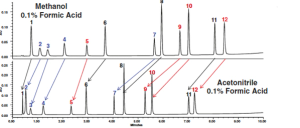
In the pharmaceutical industry, method validation is essential. But what are the best practices? We review regulatory requirements, validation parameters, methodologies, acceptance criteria, trends, and software tools.

In the pharmaceutical industry, method validation is essential. But what are the best practices? We review regulatory requirements, validation parameters, methodologies, acceptance criteria, trends, and software tools.

This article is first in a series of two white papers on stability studies and testing of pharmaceuticals, which focuses on the development of stability-indicating high performance liquid chromatography (HPLC) methods for drug substances and products. It provides an overview of the fundamentals, including the traditional approaches, as well as modern trends and software tools for expediting the process. The regulatory guidance on the necessary contents of a well-written method, strategies for efficient method execution, and life cycle management of analytical procedures, are described in Part 2 of the series.

Here we provide an overview of the fundamentals and best practices on the development of stability-indicating HPLC methods for drug substances and products. We explain both traditional and easier modern approaches to developing stability-indicating HPLC methods—including using a universal generic method for new chemical entities—and address regulatory considerations and life cycle management strategies.

Determining product shelf life is a regulatory requirement for pharmaceuticals and many other regulated consumer products. In this comprehensive overview of stability studies and testing, we summarize current regulatory requirements, share industry practices for forced degradation, and explain approaches for reduced testing and data evaluation to expedite stability study timelines.

Published: August 1st 2020 | Updated:

Published: October 1st 2020 | Updated:

Published: November 1st 2020 | Updated:

Published: June 1st 2020 | Updated: